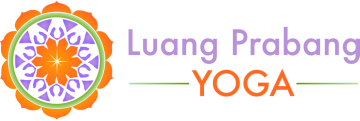 I was inspired to write this post about yoga and gender issues after a fellow yoga teacher posted this photograph on Facebook earlier this week. This photograph raises so many thoughts and questions. Why has yoga been stereotyped as a female form of exercise in the west? Why do so many men resist it when a lot of the strength and balancing postures favor the male body? What can we learn about practicing and teaching yoga so that it is relevant and safe for both genders? I’d like to start by introducing a little bit of yoga history that many people may not be aware of. While the traditional practice of yoga philosophy and meditation are thousands of years old, modern postural yoga asana as commonly seen in the west was developed at the end of the 19th century and early 20th century. Prior to this, the practice of asana was subordinate and in some cases even rejected by traditional yoga teachers who put precedence on pranayama (breath technique) and meditation. One of the most influential figures in the development of modern yoga asana is T. Krishnamacharya, who was commissioned by the Maharaja of Mysore to create a dynamic physical practice for India’s youth. What resulted is yoga asana as we know today, which is a combination of hatha yoga, wrestling exercises, and modern Western gymnastics (for a more detailed account of yoga history, go to http://www.yogajournal.com/wisdom/2610). In the early years, the practice of yoga was developed by men, taught by men and practiced only by men. In fact, Indra Devi, who is also known as the “Mother of Western Yoga,” was refused instruction by Krishnamacharya on the basis that she was Western and a woman. It took the convincing of the Maharaja of Mysore and a lot of hard work for Indra Devi to finally be accepted and respected within the yoga community. So this begs the question, with a strong lineage of male founders, when and how did women become the main practitioners of yoga? It’s perhaps due to strong female figures like Indra Devi as well as more recent teachers who have transformed the practice of yoga from “the male-centered, rigid style with a distinctly feminine practice that honors intuition, family, flow, connection, community, activism, and the cyclical nature of women’s lives” (from the official website of the movie Yoga Woman). With the increased popularity of yoga in the 1960s, more and more women were drawn to the practice until today, over 70% of yoga practitioners are women. Perhaps it is intimidating for a man to walk into a room full of women, as is common in most yoga studios. Perhaps, because men tend to be more athletic or drawn towards strength training, they’re also naturally tighter and less flexible, which can make a yoga practice incredibly painful, especially where hip and shoulder openers are concerned. Perhaps it has to do with ego, where men feel they have to do better than women. Whatever the reason, yoga has transformed. In an attempt to attract more men, many studios have started offering specialized classes, tailored specifically for the male body. Think of Broga®, Yoga for Men. The homepage of the Broga® website reads: “Men think differently, and their bodies move differently than women’s. Shouldn’t there be a yoga class geared specifically for the bodies and minds of men? Actually, there is, and it’s called Broga® Yoga.” The irony in this is while women comprise the majority of students, many of the basic yoga postures are still more male friendly. Take Chatarunga Dandasana, for example. It is a posture that is done over and over again in the Ashtanga and Vinyasa styles of yoga. Men tend to have much more upper body strength then women and can use the strength of their pectoral muscles to take them through the posture. If practiced incorrectly in the long term, this posture can be harmful on the shoulders and wrists, making women more susceptible to injury in this posture. The distance between a man’s hips and his floating ribs is a fraction of the distance for a woman. Therefore, women can be much more “bendy,” but more susceptible again to injury, whereas men have the structural stability of the shorter hip to rib distance. Arm balances such as Bakasana and Eka Pada Koundiyasana present more challenges to women since a woman’s center of gravity is on average one inch lower and further back than a man's. She also carries more weight below the waist; around her hips, buttocks, and thighs. The point of this blog is not to argue over who struggles more in yoga, and who has it easier, but to present the challenges faced by both genders. As practitioners it’s important to be aware of our own anatomical challenges so that we can practice in a way that is safe and sustainable. As teachers, it is critical to understand the anatomical differences between men and women so that we can teach in a way that is safe for everyone in the class, and so that we can be understanding and empathize with the struggles faced by the opposite gender. Yoga’s a practice that will benefit all, no matter what size and shape you are. Traditionally, it was taught one-on-one from teacher to student. In today’s world of packed out yoga classes, the one-size fits all approach has left many (not just men) alienated to the practice. From a personal level, understanding your own body and your physical structure will help you to observe, accept and appreciate your yoga practice exactly where it is instead of worrying about where you think it should be. I invite you to make any comments, arguments or even corrections to anything that I have written in this post. They reflect my own personal opinions and not those of Luang Prabang Yoga. Blog post by Julie (juliehana.com)
7 Comments
|
Archives
September 2023
Categories
All
|

 RSS Feed
RSS Feed
